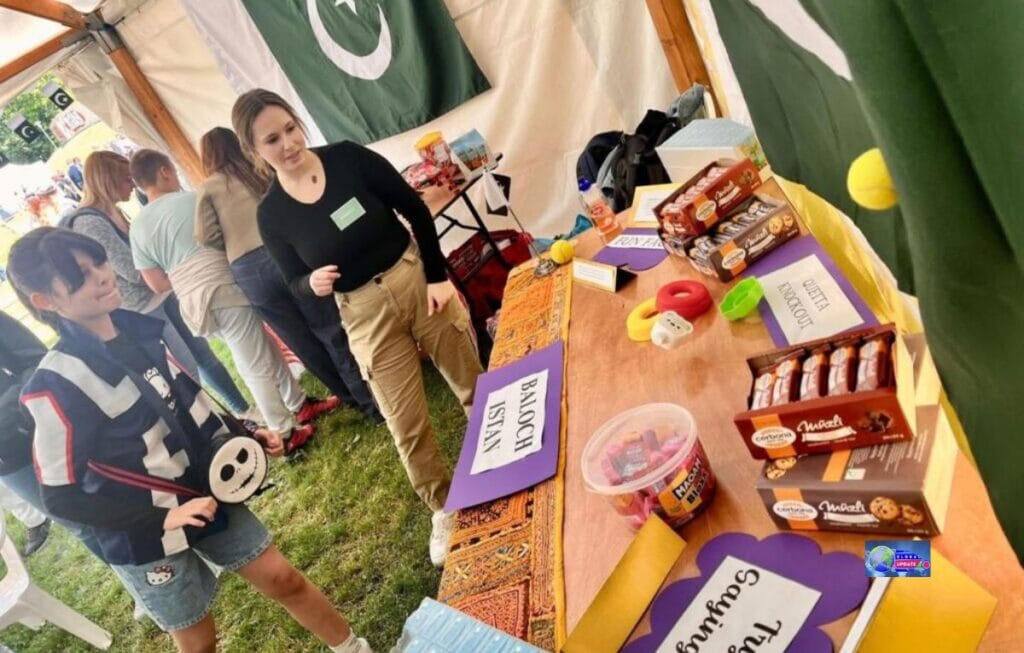Children’s Day 2025 is a global celebration that recognises the importance of children, their rights, and their bright future.
Observed every year to highlight the value of education, protection, and equal opportunities, this special day reminds us that every child deserves love, care, and a safe environment to grow.
It encourages families, schools, and communities to come together to support children’s well-being, listen to their voices, and nurture their dreams with compassion and responsibility.
Every year, the world sets aside a special occasion to focus on the rights, welfare, and voice of children. That occasion is World Children’s Day, celebrated globally on 20 November.
In 2025, this day offers a meaningful opportunity to both celebrate childhood and renew our commitments to ensuring every child lives with dignity, opportunity, and safety.

Date and Significance
World Children’s Day falls on 20 November 2025. (UNICEF) The date was chosen because it marks two historic milestones:
- In 1959, the Declaration of the Rights of the Child was adopted by the United Nations General Assembly.
- In 1989, the Convention on the Rights of the Child (CRC) was adopted.
Hence, the day is both a celebration of children and a reminder of the obligations that societies have to protect them.
History and Evolution
The idea of dedicating a day to children’s rights and welfare is not new. Some key milestones:
- In 1954, the United Nations proclaimed a “Universal Children’s Day” to promote child welfare and international cooperation.
- Over the decades, the focus has shifted from a mere celebratory event to a global platform for children’s rights, voice, and participation.
- By 2025, World Children’s Day is firmly established as an action-oriented observance: “for children, by children.”
2025 Theme: “My Day, My Rights”
For 2025, the official theme is “My Day, My Rights.”
This theme emphasises that children should not merely be recipients of care and protection but also active participants whose ideas, feelings, and aspirations matter. Key interpretation points:
- Children should have a say in the things that affect them.
- Their rights must be visible in education, health, play, protection from discrimination, and participation.
- It is a call to adults (governments, communities, and families) to hear children, to act on their rights, and to support their voices.

Why It Matters
Even today, children around the world face many obstacles: lack of access to quality education, unsafe living conditions, discrimination, limited voice in decisions, and more.
Some of the reasons why World Children’s Day remains crucial:
- Rights are human rights: Children’s rights are not optional—they are integral to human dignity and development.
- Investing in children = investing in the future: When children are educated, safe and empowered, societies benefit.
- Amplifying the child’s voice: Many children are excluded from decisions affecting them; this day is a chance to reverse that.
- Global solidarity unites governments, NGOs, schools, and families worldwide to act for children.
How It Is Celebrated Around the World
Celebrations and actions differ by country, but standard features include:
- Children leading activities: e.g., “kids takeovers” where children run media segments, speak in forums, or engage with decision-makers.
- Awareness events in schools and communities: workshops on rights, poster-making, quizzes, performances.
- Symbolic gestures: turning landmarks blue (a UNICEF initiative), online campaigns, and petitions.
- Advocacy by organisations: urging governments and institutions to fulfil children’s rights and commitments.
- Partnering with the broader sustainable development agenda: linking children’s rights to goals such as education (SDG 4), health (SDG 3), and reduced inequalities (SDG 10).
What You Can Do (For Schools, Families, Communities)
Here are practical suggestions for participation:
- Have a discussion: Ask children what “rights” mean to them. What do they want for their lives?
- Organise a rights-themed activity: a poster or essay competition titled “My Rights, My Voice” in a school or community.
- Amplify children’s voices: Give children opportunities to lead a presentation, speak at an event, or share their views.
- Raise awareness: Use social media or community boards to share facts about children’s rights and the theme.
- Support a cause: Volunteer or donate to organisations working for child welfare, education, and protection.
- Reflect on policy: For those in leadership or civic engagement, consider how your region addresses children’s rights, e.g., whether children can participate in decisions that affect them.

Special Focus for Pakistan (and the Region)
While the date and global observance are universal, local contexts are essential:
- In Pakistan, though the national “Children’s Day” may observed on different dates or in various formats, the global observance on 20 November remains relevant for rights-based advocacy.
- Schools, NGOs, and communities in Pakistan can use World Children’s Day to highlight issues such as access to education, child protection, and children’s voices in decision-making.
- By aligning local programmes with the global theme “My Day, My Rights,” efforts can resonate both locally and globally.
Conclusion
World Children’s Day 2025 is more than a date on the calendar; it is a pledge. A pledge that every child, everywhere, has rights; and that those rights include being heard, being safe, being educated, being protected, and being valued.
It asks us not only to celebrate childhood but to act for it.
On 20 November 2025, let us remember: my day, my rights, for each child. Through awareness, empathy, and action, we can move from acknowledgement to realisation of children’s rights.



